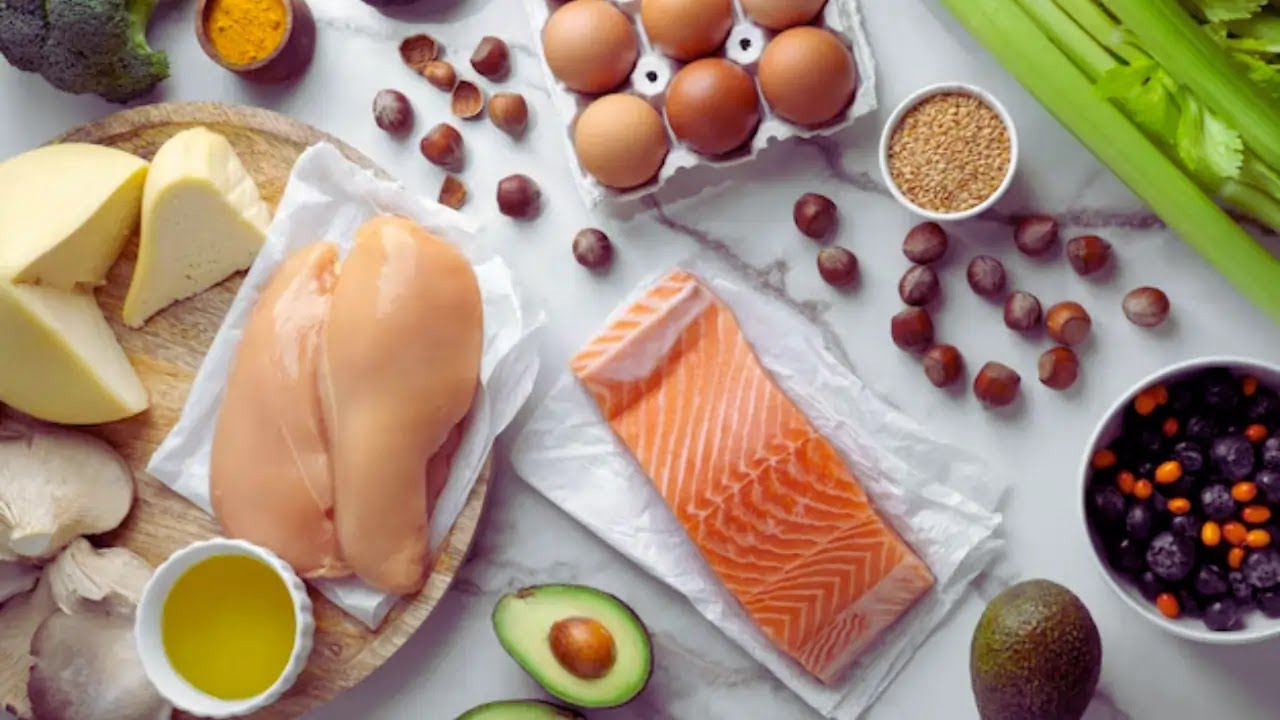Chia seeds and flaxseeds are two of the most popular superfoods in the health world. They are both rich in omega-3 fatty acids, fiber, antioxidants, and other nutrients that can benefit your health in various ways. But which one is better for you chia seed or flaxseed? How do they differ in their nutritional profiles, benefits, and uses? In this article, we will compare chia seeds and flaxseeds and help you decide which one to include in your diet.
What are Chia Seeds and Flaxseeds?
Chia seeds are tiny, black or white seeds that come from the plant Salvia hispanica, native to Mexico and Guatemala. They have been used for centuries by the Aztecs and Mayans as a source of energy and endurance. Chia seeds have a mild, nutty flavor and can absorb up to 12 times their weight in water, forming a gel-like substance.
Flaxseeds are small, brown, or golden seeds that come from the plant Linum usitatissimum, native to the Mediterranean region and India. They have been cultivated for thousands of years for their oil, fiber, and medicinal properties. Flaxseeds have a slightly nutty, earthy flavor and can be ground into a fine powder or used as whole seeds.
How do Chia Seeds and Flaxseeds Compare in Nutrition?
Both chia seeds and flaxseeds are excellent sources of plant-based omega-3 fatty acids, which are essential for brain, heart, and skin health. They also provide a good amount of fiber, which can help lower cholesterol, regulate blood sugar, and promote digestive health. Additionally, they contain antioxidants, minerals, and phytochemicals that can protect against oxidative stress, inflammation, and chronic diseases.
However, there are some differences in their nutritional values. According to the USDA, one ounce (28 grams) of chia seeds provides:
- Calories: 138
- Fat: 9 grams (of which 5 grams are omega-3s)
- Protein: 5 grams
- Carbohydrates: 12 grams (of which 10 grams are fiber)
- Calcium: 179 milligrams (14% of the Daily Value or DV)
- Magnesium: 95 milligrams (23% of the DV)
- Iron: 2 milligrams (11% of the DV)
One ounce (28 grams) of flaxseeds provides:
- Calories: 150
- Fat: 12 grams (of which 6 grams are omega-3s)
- Protein: 5 grams
- Carbohydrates: 8 grams (of which 8 grams are fiber)
- Calcium: 71 milligrams (6% of the DV)
- Magnesium: 110 milligrams (26% of the DV)
- Iron: 2 milligrams (11% of the DV)
As you can see, chia seeds and flaxseeds have similar amounts of calories, fat, protein, and iron, but differ in their carbohydrate, fiber, calcium, and magnesium content. Chia seeds have more fiber and calcium, while flaxseeds have more magnesium. Both seeds have more omega-3s than most other plant foods, but flaxseeds have a slightly higher amount.
What are the Benefits of Chia Seeds and Flaxseeds?
Both chia seeds and flaxseeds have been studied for their potential health benefits, such as:
- Improving cardiovascular health: Both seeds can lower blood pressure, cholesterol, and triglycerides, and prevent plaque buildup in the arteries, reducing the risk of heart disease and stroke.
- Enhancing cognitive function: Both seeds can improve memory, learning, and mood, and protect against neurodegenerative disorders, such as Alzheimer’s and Parkinson’s disease, by modulating brain inflammation and oxidative stress.
- Supporting weight management: Both seeds can increase satiety, reduce appetite, and prevent overeating, by slowing down the digestion and absorption of carbohydrates and fats, and by stimulating the production of hormones that regulate hunger and fullness.
- Promoting digestive health: Both seeds can relieve constipation, diarrhea, and irritable bowel syndrome, by adding bulk and moisture to the stool, and by nourishing the beneficial bacteria in the gut.
- Protecting against cancer: Both seeds can inhibit the growth and spread of cancer cells, and induce apoptosis (programmed cell death), by modulating the expression of genes and enzymes involved in the cell cycle, inflammation, and metabolism.
How to Use Chia Seeds and Flaxseeds?
Both chia seeds and flaxseeds are versatile and easy to use. You can add them to your smoothies, oatmeal, yogurt, salads, soups, baked goods, and more. You can also make chia pudding, flax eggs, or flax milk with them. However, there are some tips and precautions to keep in mind when using them:
- Chia seeds can be eaten raw or cooked, whole or ground. They do not need to be soaked or sprouted before consumption. However, if you have trouble swallowing or digesting them, you may want to soak them in water or other liquids for 10 to 15 minutes, until they form a gel-like consistency.
- Flaxseeds should be ground before consumption, as whole seeds may pass through the digestive tract undigested, reducing their bioavailability and benefits. You can use a blender, coffee grinder, or mortar and pestle to grind them. You should also store them in an airtight container in the refrigerator or freezer, as they can go rancid quickly due to their high fat content.
- Both seeds should be consumed in moderation, as too much of them can cause gastrointestinal discomfort, bloating, gas, diarrhea, or constipation. The recommended daily intake of chia seeds is 1 to 2 tablespoons (15 to 30 grams), and of flaxseeds is 1 to 2 tablespoons (7 to 15 grams) of ground seeds.
- Both seeds may interact with certain medications, such as blood thinners, blood pressure drugs, diabetes drugs, and hormone therapy, by altering their effects or increasing their side effects. Therefore, if you are taking any of these medications, you should consult your doctor before adding chia seeds or flaxseeds to your diet.
Final Thoughts about Chia Seed or Flaxseed
Chia seeds and flaxseeds are both nutritious and beneficial for your health, but they have some differences in their composition, benefits, and uses. You can choose either one or both of them, depending on your preferences, needs, and goals. However, you should always consume them in moderation, and consult your doctor if you have any medical conditions or take any medications that may interact with them.
FAQs
Q: What are the benefits of chia seeds and flaxseeds for vegan and vegetarian diets?
A: Chia seeds and flaxseeds are both excellent sources of plant-based protein, omega-3 fatty acids, iron, and calcium, which are often lacking in vegan and vegetarian diets. They can also be used as egg replacers in baking, by mixing them with water and letting them sit for a few minutes.
Q: How much chia seeds and flaxseeds should I eat per day?
A: The recommended daily intake of chia seeds is 1 to 2 tablespoons (15 to 30 grams), and of flaxseeds is 1 to 2 tablespoons (7 to 15 grams) of ground seeds. However, this may vary depending on your age, weight, health status, and goals. You should always start with a small amount and gradually increase it, and consult your doctor if you have any medical conditions or take any medications that may interact with them.
Q: Can I eat chia seeds and flaxseeds together?
A: Yes, you can eat chia seeds and flaxseeds together, as they have complementary nutritional profiles and benefits. You can mix them in your smoothies, oatmeal, yogurt, salads, soups, baked goods, and more. However, you should still follow the recommended daily intake of each seed, and not exceed it.
Q: Are chia seeds and flaxseeds safe for pregnant and breastfeeding women?
A: Chia seeds and flaxseeds are generally safe for pregnant and breastfeeding women, as they can provide essential nutrients and benefits for both the mother and the baby. However, some studies have suggested that high doses of flaxseeds may have estrogenic effects and interfere with hormone levels and fetal development. Therefore, pregnant and breastfeeding women should limit their intake of flaxseeds to no more than 1 tablespoon (7 grams) of ground seeds per day, and consult their doctor before adding them to their diet.
Q: Are chia seeds and flaxseeds gluten-free?
A: Yes, chia seeds and flaxseeds are naturally gluten-free and can be safely consumed by people with celiac disease or gluten intolerance. However, some products that contain chia seeds or flaxseeds may also contain gluten from other ingredients or cross-contamination. Therefore, you should always check the label and look for certified gluten-free products if you have a gluten allergy or sensitivity.

.webp)


 Afrikaans
Afrikaans Albanian
Albanian Amharic
Amharic Arabic
Arabic Armenian
Armenian Azerbaijani
Azerbaijani Basque
Basque Belarusian
Belarusian Bengali
Bengali Bosnian
Bosnian Bulgarian
Bulgarian Catalan
Catalan Cebuano
Cebuano Chichewa
Chichewa Chinese (Simplified)
Chinese (Simplified) Chinese (Traditional)
Chinese (Traditional) Corsican
Corsican Croatian
Croatian Czech
Czech Danish
Danish Dutch
Dutch English
English Esperanto
Esperanto Estonian
Estonian Filipino
Filipino Finnish
Finnish French
French Frisian
Frisian Galician
Galician Georgian
Georgian German
German Greek
Greek Gujarati
Gujarati Haitian Creole
Haitian Creole Hausa
Hausa Hawaiian
Hawaiian Hebrew
Hebrew Hindi
Hindi Hmong
Hmong Hungarian
Hungarian Icelandic
Icelandic Igbo
Igbo Indonesian
Indonesian Irish
Irish Italian
Italian Japanese
Japanese Javanese
Javanese Kannada
Kannada Kazakh
Kazakh Khmer
Khmer Korean
Korean Kurdish (Kurmanji)
Kurdish (Kurmanji) Kyrgyz
Kyrgyz Lao
Lao Latin
Latin Latvian
Latvian Lithuanian
Lithuanian Luxembourgish
Luxembourgish Macedonian
Macedonian Malagasy
Malagasy Malay
Malay Malayalam
Malayalam Maltese
Maltese Maori
Maori Marathi
Marathi Mongolian
Mongolian Myanmar (Burmese)
Myanmar (Burmese) Nepali
Nepali Norwegian
Norwegian Pashto
Pashto Persian
Persian Polish
Polish Portuguese
Portuguese Punjabi
Punjabi Romanian
Romanian Russian
Russian Samoan
Samoan Scottish Gaelic
Scottish Gaelic Serbian
Serbian Sesotho
Sesotho Shona
Shona Sindhi
Sindhi Sinhala
Sinhala Slovak
Slovak Slovenian
Slovenian Somali
Somali Spanish
Spanish Sundanese
Sundanese Swahili
Swahili Swedish
Swedish Tajik
Tajik Tamil
Tamil Telugu
Telugu Thai
Thai Turkish
Turkish Ukrainian
Ukrainian Urdu
Urdu Uzbek
Uzbek Vietnamese
Vietnamese Welsh
Welsh Xhosa
Xhosa Yiddish
Yiddish Yoruba
Yoruba Zulu
Zulu